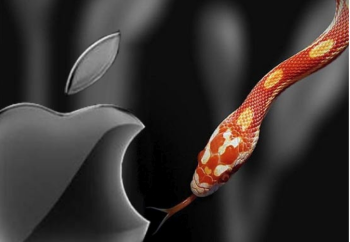Click to join the conversation with over 500,000 Pentecostal believers and scholars
Click to get our FREE MOBILE APP and stay connected
| PentecostalTheology.com



 After months of rumors, the iPhone 7 and iPhone 7 Plus are here in the flesh! Apple announced both today at its launch event in San Francisco. If you always wanted water resistance and better battery life on your iPhone, you’re going to be happy. If you wanted a headphone jack, you’ll be sad.
After months of rumors, the iPhone 7 and iPhone 7 Plus are here in the flesh! Apple announced both today at its launch event in San Francisco. If you always wanted water resistance and better battery life on your iPhone, you’re going to be happy. If you wanted a headphone jack, you’ll be sad.
A tough problem for theology: the Resurrection vs. the iPhone
Sophisticated theologians are an endless source of amusement. When they’re not making stuff up about how Adam and Eve could sort of have existed, but not really, they’re musing about how the Resurrection could really have happened, but without leaving physical evidence. Sigmund, our tireless watchdog of apologetics, reports on the latest way that theologians reconcile science with the resurrection. This time it’s not atBioLogos, but that other source of Theology LOLz, HuffPo. It’s really unbelievable that people a). get paid to engage in such thinking and b). get this kind of stuff published in a widely-read venue. Note that Rev. Pideret has impeccable educational credentials.
Sophisticated Theology – the iPhone Conundrum
According to Rowan Williams, the outgoing Archbishop of Canterbury, “the ultimate test of the Christian religion is not whether it is useful, beneficial or helpful to the human race but whether or not its central claim – the resurrection of Jesus Christ – actually happened.” If, therefore, we are dealing with a real historical event rather than a parable or poetic metaphor, the question of physical evidence is important. If Jesus really did come back to life and appear to people living at that time, what might a witness have seen?
John Haught famously said: “If you had a camera in the upper room when the disciples came together after the death and Resurrection of Jesus, we would not see it. I’m not the only one to say this. Even conservative Catholic theologians say that.”
Father John Piderit, the former president of Loyola University of Chicago and current president of the Catholic Education Institute in New York, has taken Haught’s camera question to its logical conclusion in a recent piece that’s positively dripping with sophisticated theology. Piderit’s article,“eResurrection”, published on the Huffington Post, updates Haught’s question by asking:
“What would a resurrection appearance of Jesus have looked like if an alert apostle had an iPhone and, assuming the apostle was not immediately told by Jesus to “put that iPhone away,” the apostle captured a minute of Jesus’s appearance with the iPhone video running?”
And also assuming that the sudden appearance of a re-animated Jesus doesn’t fluster the poor apostle so much that he accidentally tries to film the resurrected Christ using ‘Angry Birds’.
“Would anything other than the disciples themselves show up on the video?”
Well? Would it? – “Maybe, maybe not.” Now I’m curious. Why might they fail to capture Jesus on camera?
“The reason for uncertainty comes from what was said above about the special qualities of Jesus’ body. In the Gospel appearances, Jesus as resurrected had to register in the retina of the eyes of his disciples, otherwise they would not have really seen him.”
Ahh, science. Now you’re talking my language. If the body of Jesus had been brought back to life, all the normal physical processes would apply, wouldn’t they? E.g., reflecting light, taking up space, applying gravitational pressure on the ground beneath his feet, etc.
Where exactly is this ray-emitting, barrier-defying Jesus mentioned in the Bible? Quite frankly I don’t recall this sort of description in any Catholic sermon I’ve ever heard. Is there a special edition of the New Testament available only to sophisticated Catholic theologians – the one which contains ‘The Gospel according to Stan Lee’?
“On the other hand, if the camera were running during the breakfast that he shared with the disciples on the shore of the Sea of Tiberias, whatever food Jesus ate would have had to be visible at one point and then disappear, since the disciples saw Jesus eat the food.”
So now he’s ‘The Invisible Man’? “Let’s up the ante and pose a second hypothetical. If a Jewish reporter with an iPhone wanted to speak with Jesus, would the resurrected Jesus, if indeed he did create an image on the iPhone, have been willing to be interviewed?”
A Jewish reporter with an iPhone asking for an interview with Jesus?
But which Jewish reporter? Jesus would need to be careful – talking to a Galilean version of Jon Stewart might do wonders for his image. But what if he got a Joan Rivers! Or, heaven forbid, a Sacha Baron Cohen!
“The belief of the Church suggests no.” Probably the safest option. “The reason is, according to Christian belief, Jesus is already the fullest possible revelation of God in human form.”
And how do you explain Jesus’s reported appearance in the Americas – preaching to the Nephites and, more recently, appearing to Joseph Smith and other Mormon Church leaders? Funnily enough, I think we can all guess how Father Piderit would explainthose appearances. Piderit concludes the piece with a solid pronouncement on the theological implications of the matter.
“So, iPhones are great. But they would not facilitate faith in God made man nor would they enhance revelation.”



Jon Ray
https://books.google.com/books?id=Fm9yCgAAQBAJ&pg=PT137&lpg=PT137&dq=theology+white,+western+men+theology&source=bl&ots=7fJvWxdPal&sig=vD6iUOEYtIvFeM17JxFVaoCXT9o&hl=en&sa=X&ved=0ahUKEwjgq5uQ6YnPAhVLNSYKHaGDB2IQ6AEIKjAC#v=onepage&q=theology%20white%2C%20western%20men%20theology&f=false